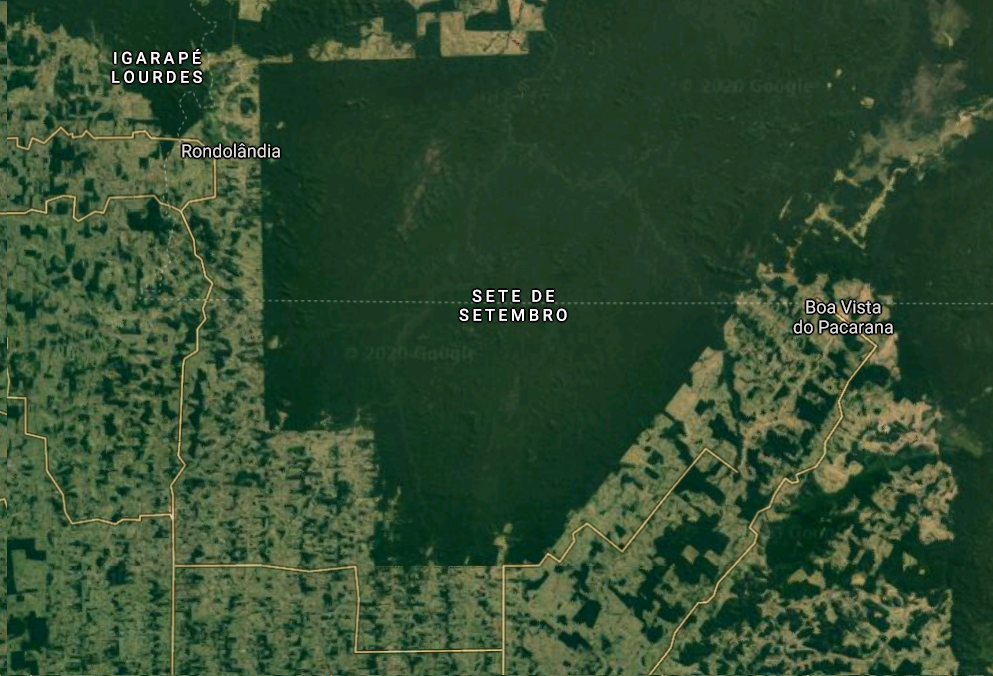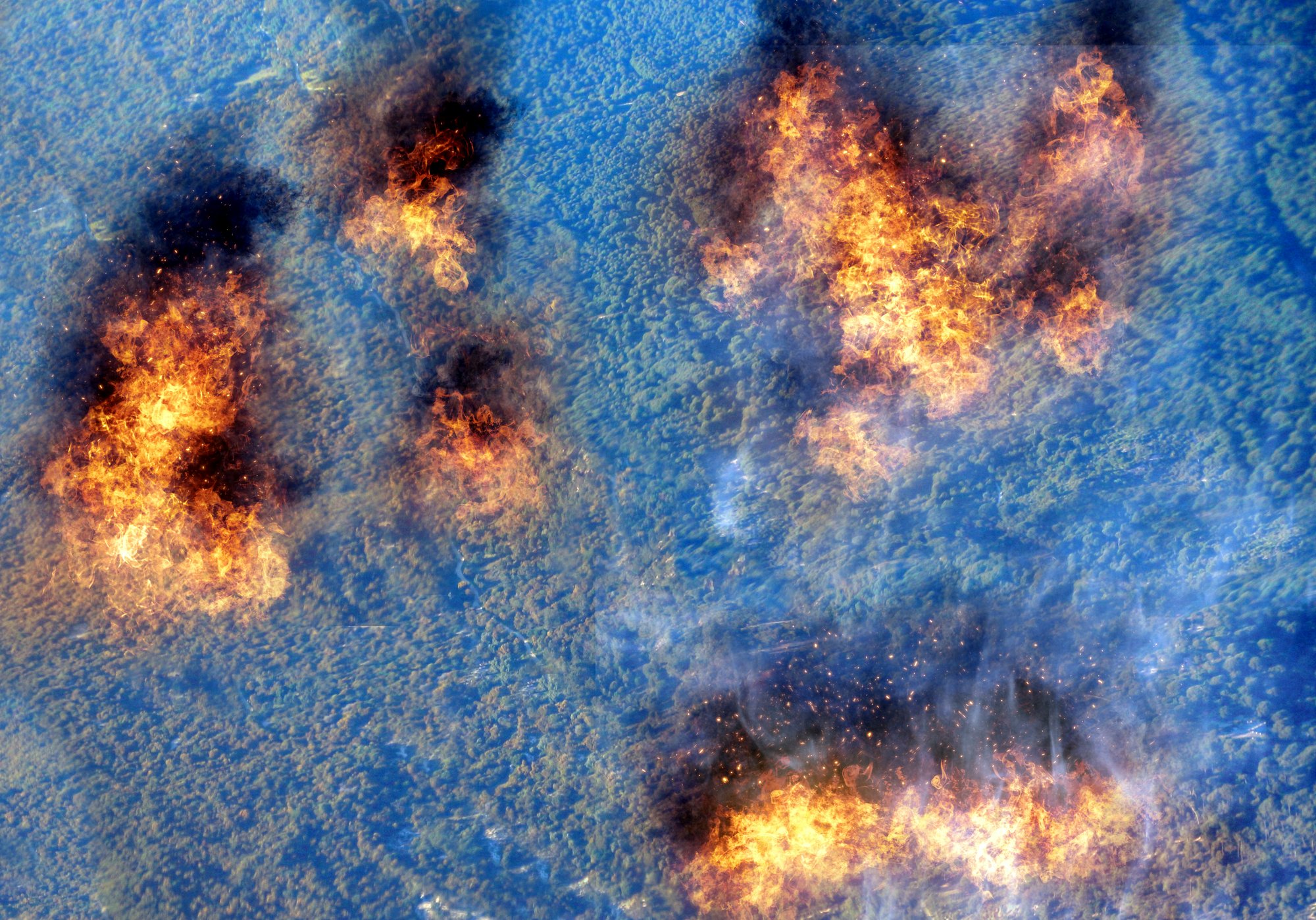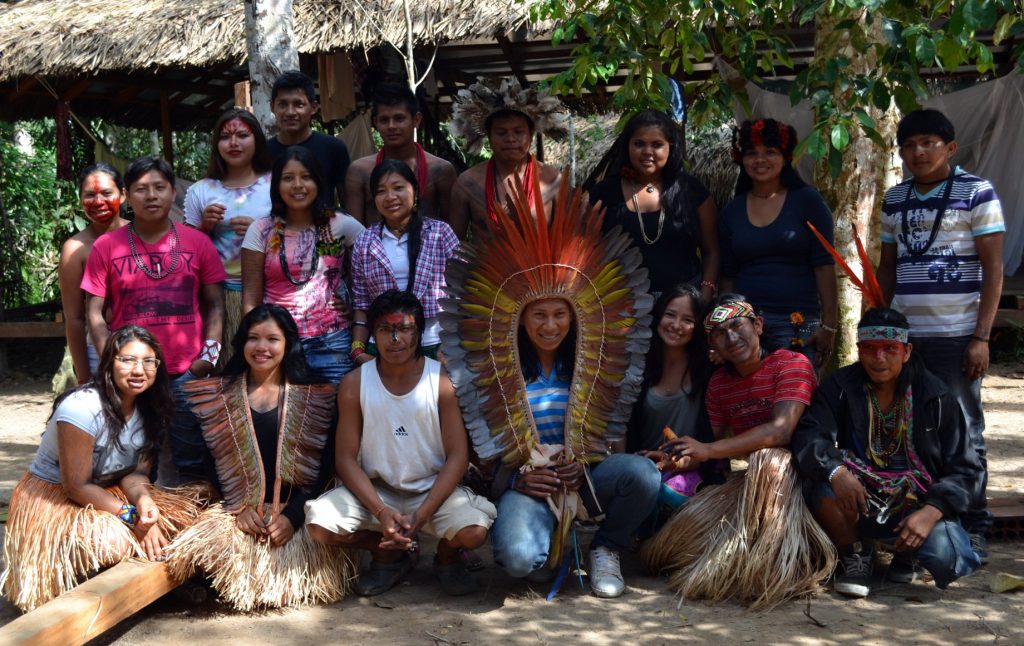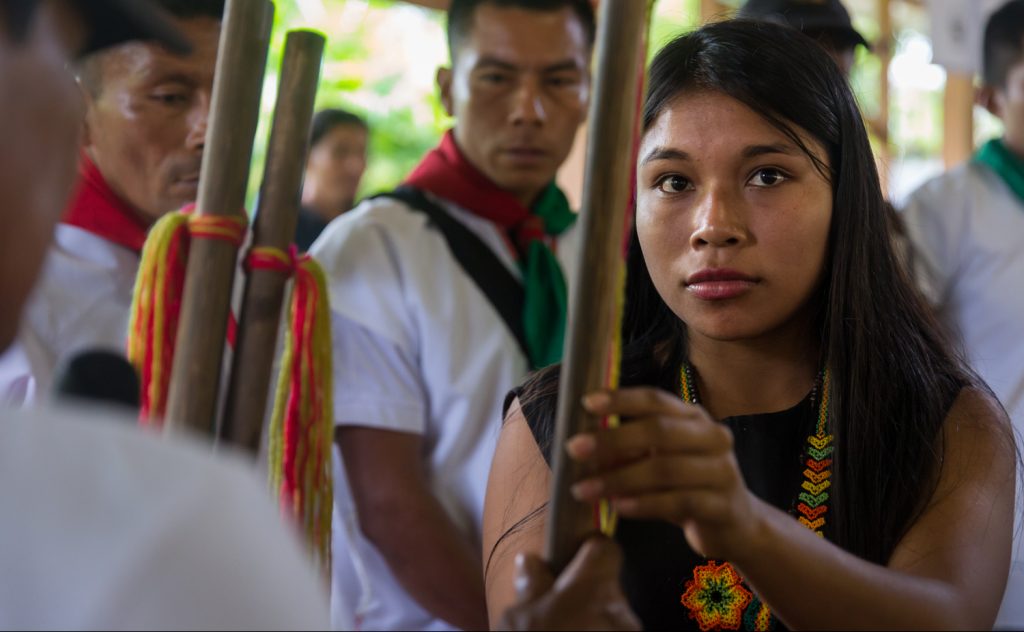International climate funding, including the REDD+ mechanism, is falling short when it comes to supporting indigenous forest guardians in the Amazon and elsewhere in the world, according to a panel of experts convened on Thursday, December 10th for a virtual roundtable on the subject.
The discussion, hosted by Forest Trends and moderated by Andrew Revkin of Columbia University’s Earth Institute Initiative on Communication Innovation and Impact, was led by David Kaimowitz of the Climate and Land Use Alliance, Oliver Phillips of Leeds University School of Geography, Carmen Josse of the Amazonian Network of Georeferenced Socio-Environmental Information (RAISG), Juan Carlos Jintiach from Coordination of Indigenous Organizations of the Amazon Basin (COICA), and Beto Borges from Forest Trends’ Communities and Territorial Governance Initiative.
Deforestation and forest degradation account for an estimated 15% of global greenhouse gas emissions. In response, the United Nations Framework Convention on Climate Change has negotiated a mechanism, known as REDD+, to support lower income countries to reduce their emissions from deforestation and forest degradation. REDD+ channels financial and technical support to countries to enact and implement policies promoting forest conservation. The system awards funding as “results-based payments,” which is based on demonstrated success in reducing greenhouse gas emissions from forests relative to an established baseline (also referred to as a “reference level”).
So far REDD+ is losing the battle: the latest data from RAISG and the Brazilian National Institute for Space Research (INPE) indicate that between 2007, when REDD+ started, and 2020, the world lost 32 million hectares of Amazon rainforest, an area roughly the size of Germany. Eleven million were in Brazil – with a disastrous 1.1 million hectares in the Brazilian Amazon lost in 2020 alone.
What REDD+ has overlooked
In practice, panelist David Kaimowitz pointed out, REDD+ programs have focused on deforestation more than forest degradation.
“For mostly practical reasons, these programs have tended to focus on carbon emissions and carbon sinks that have to do with land use change. That’s deforestation or reforestation,” said Kaimowitz.
“Why have they done that? Largely because that’s the easiest thing to track from a satellite. But it’s just as important in terms of the climate how much carbon is being captured and how much carbon is being emitted from areas that don’t have land use change.”
As a result, carbon captured by standing forests, and emissions from forests being degraded in ways that can’t be easily tracked through remote sensing, have been largely sidelined, Kaimowitz said.
That means that a massive carbon sink in South America – its mature forests – is being overlooked, added Phillips.
“In almost all South American forested countries, the sink from the mature forest is greater than net emissions from fossil fuels and land use change combined,” said Phillips. “These [standing forests] actually make a huge difference to national emissions and should be used at the international level in Paris Accord submissions [such as Nationally Determined Contributions – the emissions reductions plans submitted by each country]. It’s a crime that they’re not.”
Carbon sinks on indigenous lands: The myth of stability
The Yale School of Forestry has estimated that one-third of this carbon sink is in lands titled or occupied (e.g., not yet titled) by indigenous territories or communities. If the entire Amazon forest was lost, and its carbon emitted into the atmosphere, it would be the equivalent of up to 140 years of all human-induced carbon emissions.

“[Indigenous peoples] are currently guardians through their presence on landscapes. You can see this in the data. It’s not some kind of romantic idea. It’s in the data. It’s in the science,” observed Revkin.
However, because deforestation rates are low in many of these indigenous territories, these territories have not been a focus of REDD+, says Borges. “Because of [the principle of] additionality, most indigenous territories are excluded, because they’re not considered to be in immediate threat of deforestation. In addition, REDD+ additionality does not consider evolving macro economic policies and the dismantling of environmental regulations that lead to future deforestation from infrastructure and energy development and agribusiness under way in the Amazon.”
“Additionality” is a bedrock principle of REDD+. It means that the recipient must be able to show that they would not have been able to reduce emissions or remove carbon from the atmosphere without financial support for forest protection, reforestation, or other management practices.
Because of the assumption that forests are not under threat in indigenous territories, they don’t meet the additionality criterion. Yet that stability may be a myth, said Kaimowitz.
“[One of the reasons] that indigenous territories have been largely ignored in the discussion is the belief that there’s no problem…That’s based in this idea that these are stable forests,” Kaimowitz noted.
“The reality, unfortunately, is that many of these forests are very, very much increasingly at risk. [These risks] are not being adequately captured, in part because we’re looking at what happened the last 20 years, not what’s happening right now or [in] the last couple of years, and we’re certainly not looking at what the threats are likely to be for the next four or five years.”

A new study from RAISG shows that deforestation in the Amazon has accelerated in recent years. Deforestation and wildfires hit a decade high in 2020, according to the analysis.
Further complicating the picture is the fact that degradation is the primary problem in indigenous territories, not deforestation, said Carmen Josse. Degradation is happening largely as a result of fires, illegal logging and mining, and other illegal activities.
“In some countries, we have been able to show a reduction in deforestation in relation to the reference [level]. Therefore [areas in Amazonia] get REDD+ funds because we are achieving some of these goals in reduction. But nobody’s looking yet at degradation,” said Josse.
Phillips noted the difficulties in his research of accurately measuring the effects of forest change and degradation on carbon sinks.
“It’s actually really hard to measure this. It’s tough work and you need to measure a lot of trees over a lot of time…It requires really precise measurement, tremendous skills, and courage,” said Phillips, noting that researchers must climb 10+ meters into trees in order to take repeated and extremely precise measurements, and do so at a large scale across the Amazon.
“I really want to salute the efforts of colleagues across South America at all levels…We still need these people [field researchers and forest-based communities] in a global scientific sense [because] we can’t actually measure what’s happening inside these forests from satellites. Space just doesn’t cut it. You can spend billions of dollars on putting eyes in the sky – and they’re incredibly powerful for looking at deforestation, but they can’t measure the subtle changes happening within forests.”
A seat at the table for indigenous peoples
Taken together, misconceptions about the stability of mature Amazon forests and international inattention to degradation have left indigenous communities without much-needed support, said Borges.
“Even with the best of intentions and good will during its design, REDD is not meeting indigenous needs in practice. What we believe are extremely needed are new mechanisms that can respect and reward this work of stewardship that indigenous peoples have been doing for years, at great risk, great cost, often at the cost of their lives.”

Jintiach added that REDD+ is also a difficult system for indigenous peoples to navigate. His organization, COICA, has spent years convening roundtables on REDD+ in a number of countries.
“[But] initiatives from the government and some other partners were not respecting the principles of indigenous peoples, what they [had to] say – Free, Prior, and Informed Consent (FPIC), participation, equality, transparency,” said Jintiach.
All the information has to be on the table for [everyone involved]. So we decided to create our own initiative for indigenous organizations: RIA, or Amazon Indigenous REDD [to ensure this work was happening] in consensus, in consultation, [and with] FPIC…We needed to try to complement REDD+ initiatives because governments were the only key actors. We need to put [indigenous rights and perspectives] on the table.”
Michael Jenkins, CEO of Forest Trends, echoed Jintiach and Borges, “There needs to be a new kind of approach – a new instrument like REDD, but one that’s really designed and structured in a way that is inclusive to the needs and values that these [forest] communities bring us.”
Looking forward: Redesigning climate funding to better support indigenous communities
REDD+ is appropriate for many situations, but perhaps not for indigenous, Afro-descended, and local communities managing forests collectively, panelists suggested. What could a parallel climate finance system for indigenous territories look like? Panelists offered a number of suggestions and perspectives.
A better understanding of threats to standing forests
Monitoring and recording needs to shift to account for what is happening on the ground in indigenous territories in the Amazon. There is an assumption that lands without much deforestation are stable. This is not true, panelists agreed.
Rethinking climate funding mechanisms
Another important change, Jintiach and Borges agreed, is that payments must be direct to indigenous peoples. There is currently a lot of money that gets tied up in the bureaucracy of jurisdictional programs and/or corrupt actors. “We estimate only about 2% of REDD+ funding has been directed to indigenous territories,” said Borges. “Even then, this money rarely makes it to the ground.”
“People need to respect how we are organized and how we are working in our own countries, own territories. And the ambition is to work with all territories, maybe 200 million hectares. But still we are fighting for our rights, [and for] resources that are not going to the ground,” said Jintiach.
Funding shouldn’t be based on additionality, suggested David Kaimowitz. Instead, base payments on carbon stocks, acreage protected, or the cost of the governance necessary to uphold territorial protection.
Build strategies around indigenous perspectives and territorial governance
Borges talked about a “virtuous cycle” of indigenous territorial governance. Direct climate funding to indigenous communities would support stronger territorial governance, enabling communities to organize, monitor and defend their territories, and advocate for their rights. In turn, this would lead to even more powerful stewardship of carbon sinks, biodiversity, and other ecological values. International recognition of these contributions would spur additional direct funding, repeating the cycle.

Finally, speakers agreed that climate finance mechanisms need to adopt processes that are culturally appropriate for indigenous peoples.
“We’re approaching the five-year anniversary of the Paris Agreement on climate change,” said Revkin. “It includes provisions that integrate in nominal ways the needs and considerations and the value that’s produced by indigenous guardianship, but it’s not really there in a way that’s meaningfully improving the lives of those [caring for] the forests that we all depend on.”
In other words, the programs we have designed have not succeeded in accommodating indigenous realities and values. This is essential to supporting indigenous rights, preventing free riding, and practicing inclusivity.
Jenkins concluded the panel by calling the global community to reflection and action.
“The premise that we’re putting forward here is that we’re missing a big part of the equation when we think about forests and climate, and the role that indigenous peoples play in those intact forests that are not under threat immediately,” he said.
“I think we’re at an incredibly important moment right now globally when we think about forests, climate, and communities, and I think we have to deliver that message very strongly and clearly to our new government here in the US, to the COP process [and international community], that we need different approaches if we are going to effectively engage with the communities that are the primary stewards of these forests that we care about.”
Viewpoints showcases expert analysis and commentary from the Forest Trends team.
Connect with us on Facebook and Twitter to follow our latest work.
